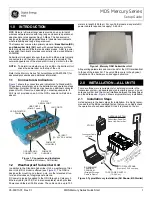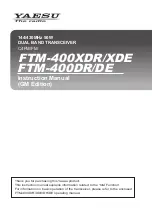
4.Operate the Program/Execute switch. The display will now show the deviation setting
(WIDE/NARROW):
__________________ __________________
_WIDE DEVIATION _ or _NARROW DEVIATION_
__________________ __________________
If you wish to make a change, operate the vertical switch to toggle the status. When the display
indicates the desired condition, press the Program/Execute switch a final time. At this time the
changes you have made will become the new settings for the channel.
3-5. ALARM INDICATIONS.
An alarm condition for either channel will:
Illuminate the alarm indicator (the indicator will blink in the case of a transmitter overmodulation
alarm),
Indicate the alarm status on the LCD display,
The following will occur for all alarm conditions except transmitter overmodulation
alarm:
Cause a form C relay closure to appear at the terminal block on the rear of the shelf for remote
indication.
Mute the output of the channel (composite in the case of a receiver, or the subcarrier in a
transmitter).
Alarms are:
Transmitter: CXR ALMif the carrier frequency deviates beyond predetermined limits.
AFC ALMif the synthesizer is out of lock.
CXR AFCif both alarms are present.
OVERMODif the combined composite input signals cause the internal deviation
limiter to activate (due to either excessive input level or misadjustment of the front panel
DEViation control).
455 Operation Manual
Page 21
6/23/98













































